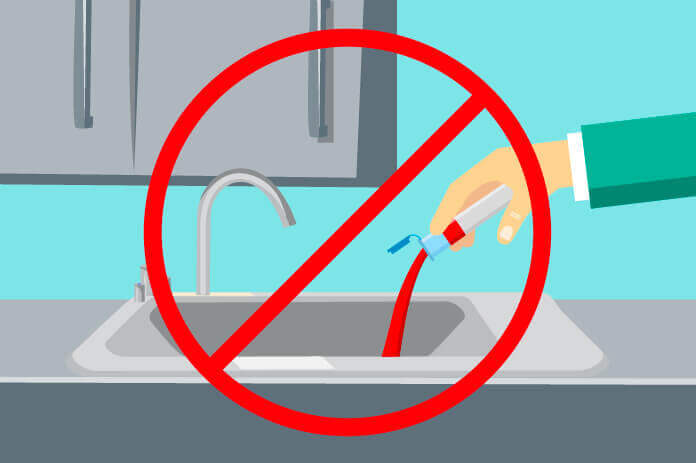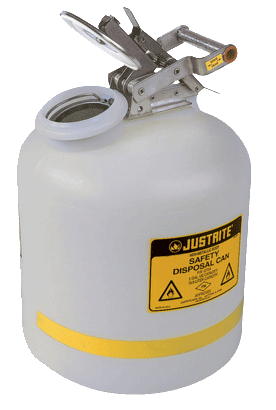Just How Liquid Waste Disposal Functions: A Detailed Overview of Strategies and Technologies Used

Review of Liquid Waste Types
The complexity of liquid waste types requires an extensive understanding of their attributes and effects for disposal. Fluid waste can extensively be classified right into numerous kinds, including industrial, community, agricultural, and contaminated materials. Each classification exhibits distinct residential or commercial properties, requiring specific management strategies to minimize ecological and health and wellness dangers.
Industrial fluid waste stems from producing processes and frequently includes a range of contaminants, such as hefty metals, solvents, and organic substances. Local liquid waste, mainly comprising wastewater from houses and industrial establishments, contains raw material, nutrients, and virus (industrial wastewater treatment). Agricultural liquid waste, including drainage from farms, may include plant foods, chemicals, and animal waste, posturing risks to water quality and ecosystems
Unsafe liquid waste is identified by its toxicity, sensitivity, or possible to cause injury. This classification consists of materials like acids, bases, and specific chemicals that demand rigid handling and disposal protocols. Comprehending these varied liquid waste types is crucial for establishing effective disposal methods and ensuring conformity with ecological policies. Correct classification and characterization are essential for applying suitable therapy techniques and lessening the adverse effect on public health and the atmosphere.
Physical Treatment Approaches

Screening is the first action, where bigger particles and particles are gotten rid of from the fluid waste utilizing screens or grates. In sedimentation tanks, larger bits work out at the bottom, creating a sludge layer, while the cleared up liquid can be more treated.
Filtration is an additional essential approach that includes passing the liquid through porous products, such as sand or membranes, to record smaller sized particles. This action enhances the high quality of the liquid, making it ideal for succeeding therapy processes.

Chemical Treatment Strategies
Chemical treatment strategies are necessary for efficiently handling fluid waste, specifically in attending to dissolved and colloidal pollutants that physical methods may not appropriately remove. These methods use different chemical representatives to neutralize, precipitate, or change harmful compounds into less hazardous kinds.
One common technique is coagulation and flocculation, where chemicals such as alum or ferric chloride are included to advertise the gathering of suspended particles. This procedure enhances sedimentation, enabling less complicated elimination of the resulting sludge. Furthermore, oxidation processes, using representatives like chlorine or ozone, are used to break down intricate organic compounds and microorganisms, rendering the waste much safer for discharge or further treatment.
Neutralization is one more important technique, which changes the pH of acidic or alkaline waste streams to neutral degrees, stopping possible damage to downstream systems and the environment. Furthermore, progressed oxidation procedures (AOPs) make use of mixes of oxidants and ultraviolet light to break down consistent toxins, accomplishing a higher level of therapy effectiveness.
Organic Therapy Procedures
Organic treatment procedures play a crucial role in the monitoring of liquid waste by using bacteria to decay raw material and reduce pollutant degrees. These procedures can be broadly classified right into anaerobic and cardiovascular therapies, each utilizing certain microbial communities to accomplish efficient waste Recommended Reading degradation.
Cardio therapy includes the use of oxygen to assist in the breakdown of organic materials by bacteria. This process is generally carried out in turned on sludge systems, where oygenation containers give a helpful atmosphere for microbial development, causing the oxidation of organic contaminants. The resultant biomass can be divided from treated effluent via sedimentation.
In contrast, anaerobic treatment occurs in the lack of oxygen, depending on various microorganisms to break down raw material. This approach is especially helpful for high-strength waste, as it creates biogas, a renewable resource source, while minimizing sludge manufacturing. Technologies such as anaerobic digesters are often utilized in commercial and municipal applications.
Both anaerobic and cardio organic therapies not just reduce the ecological effect of liquid waste however likewise assist in source healing, making them essential elements of sustainable waste administration strategies. Their effectiveness, flexibility, and performance sustain their extensive application across numerous industries.
Emerging Technologies in Disposal
Cutting-edge methods to fluid waste disposal are quickly evolving, driven by improvements in modern technology and a boosting focus on sustainability. Among these arising modern technologies, membrane layer bioreactors (MBRs) have gained traction for their capacity to combine organic therapy with membrane filtration, leading to premium effluent that can be recycled in various applications. MBRs enable smaller sized impacts and a lot more efficient procedures compared to traditional systems.
An additional appealing development is making use of anaerobic food digestion combined with nutrient recuperation technologies, which not only treats liquid waste however likewise produces biogas and recuperates beneficial nutrients like nitrogen and phosphorus. This twin benefit enhances resource performance and reduces ecological influence.
Furthermore, advanced oxidation procedures (AOPs) are being taken on for the destruction of intricate natural contaminants. These methods make use of powerful oxidants and catalysts to break down impurities at the molecular degree, using a highly effective solution for tough waste streams.
Moreover, the assimilation of expert system and machine learning in waste monitoring systems is enhancing operational performance and anticipating upkeep, bring about minimized expenses and improved ecological compliance. These technologies reflect a substantial change in the direction of even more lasting and effective liquid waste disposal techniques.
Final Thought
In conclusion, reliable liquid waste disposal demands a thorough understanding of different techniques and modern technologies. The integration official statement of physical, chemical, and organic treatment approaches guarantees the reliable administration of varied waste types. In addition, the introduction of innovative modern technologies enhances therapy efficacy and promotes sustainability in waste monitoring methods. By continually advancing these techniques, it becomes feasible to resolve the Learn More expanding challenges associated with fluid waste, ultimately adding to environmental management and resource recuperation.
Fluid waste disposal is an important aspect of environmental management, needing a thorough understanding of numerous techniques and technologies tailored to different waste types. Liquid waste can extensively be classified right into a number of kinds, consisting of industrial, metropolitan, farming, and unsafe waste. Agricultural liquid waste, including runoff from farms, may have plant foods, chemicals, and pet waste, posturing threats to water top quality and ecological communities.
Different physical treatment approaches play a vital duty in handling fluid waste effectively - industrial wastewater treatment.In final thought, efficient fluid waste disposal requires a thorough understanding of numerous strategies and innovations